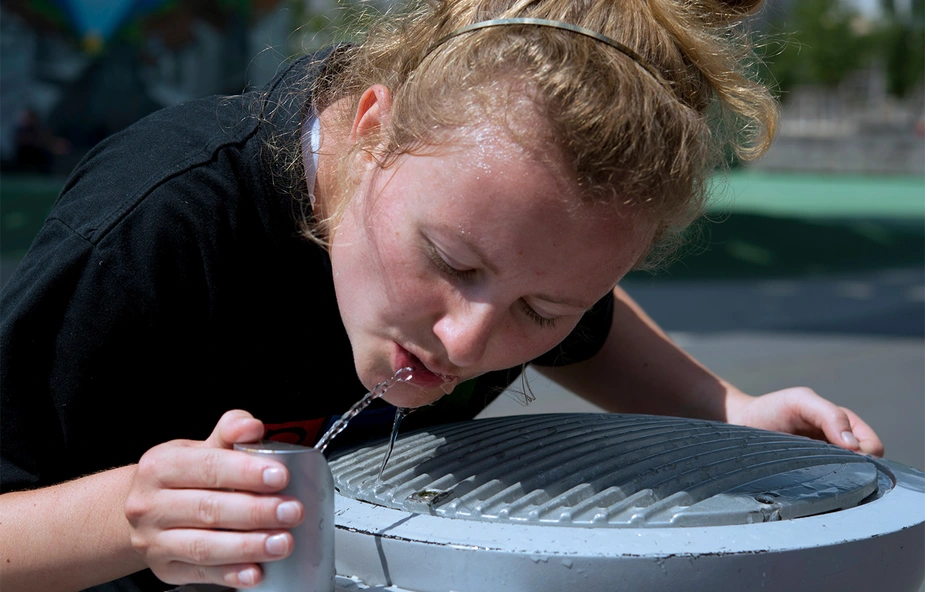Innovative sensor system enables real-time analysis of drinking water
BAM is developing a fast, precise method to detect fecal contamination
In an EU project, the Bundesanstalt für Materialforschung und -prüfung (BAM) is developing a method to detect fecal contamination in drinking water quickly and efficiently. A mini-sensor system is being used that enables on-site analysis of water contamination in real time.
According to estimates by the World Health Organization (WHO), two billion people worldwide use drinking water that is contaminated with feces. In Germany, 3.6% of the drinking water samples tested also contain these germs. This leads to considerable health risks, social and economic challenges, as well as environmental problems. Access to clean, safe drinking water is therefore extremely important and is also one of the United Nations’ Sustainable Development Goals.
Water quality is usually analyzed by microbiological laboratory tests in which samples are cultured to determine the presence and quantity of bacteria. Detection is very time-consuming (often 18-24 hours), expensive and requires specialized laboratories and personnel. In addition, there is no possibility of carrying out these tests directly on site.
In the interdisciplinary project "Real-time Indication of Fecal Pigments in Freshwater" (RIFF), researchers are working on a new method that allows for faster and more accurate monitoring. They aim to use fecal indicator pigments (FIPs) for water analysis on site for the first time. "FIPs are chemical substances found in feces that can serve as indicators of contamination in water," explains Swayam Prakash, PostDoc and coordinator for the project at BAM.
The research team is working on a sensor prototype that can detect FIPs at trace levels, i.e. in very low concentrations. To achieve this, the researchers are developing a special filter membrane and combining it with a microfluidic chip. A smartphone will be used to measure and evaluate the results. Detection is based on fluorescence amplification. When FIPs accumulate in the membrane, a stronger fluorescence signal, i.e. a brighter glow, is recorded. This allows the drinking water quality to be determined directly on site in real time.
In addition to being used for drinking water sources, the device is also expected to allow for the analysis of recreational waters such as lakes. Furthermore, an automated method is being developed to minimize interference or measurement errors caused by naturally occurring dissolved organic matter (DOM), such as humic acids, which are produced by the decomposition of plant material.
The project is funded by a Marie Skłodowska-Curie Postdoctoral Fellowship within the framework of Horizon Europe, which promotes the international exchange of scientists. The project will enable Swayam Prakash from India to conduct research in this project at BAM over the next two years.
"The Marie Skłodowska-Curie Postdoctoral Fellowship enables BAM to support outstanding talents from around the world while making a crucial contribution to solving global challenges," says Knut Rurack, Head of the Chemical and Optical Sensing Division at BAM and mentor of the fellow.
Contact:
Bundesanstalt für Materialforschung und -prüfung (BAM)
Division: Chemical and Optical Sensing
+49 30 8104-1190
Email
Credit: BAM, 25 September 2024
